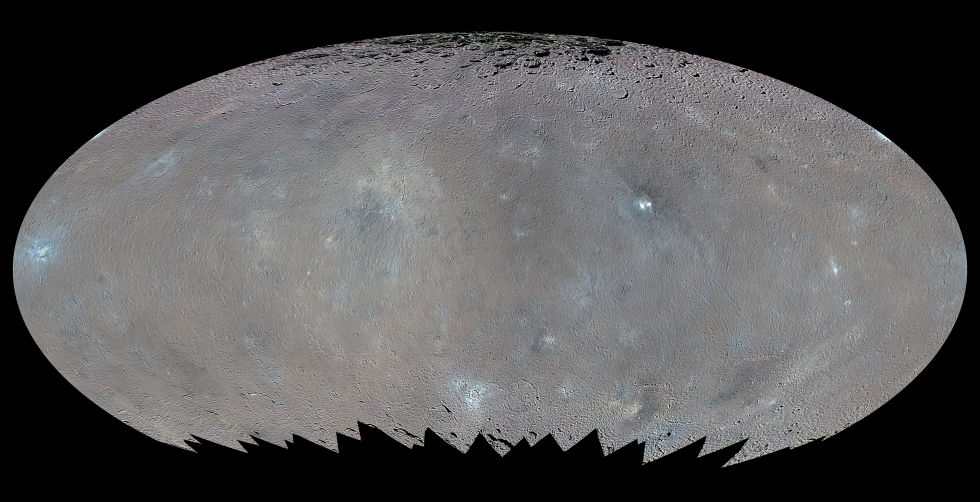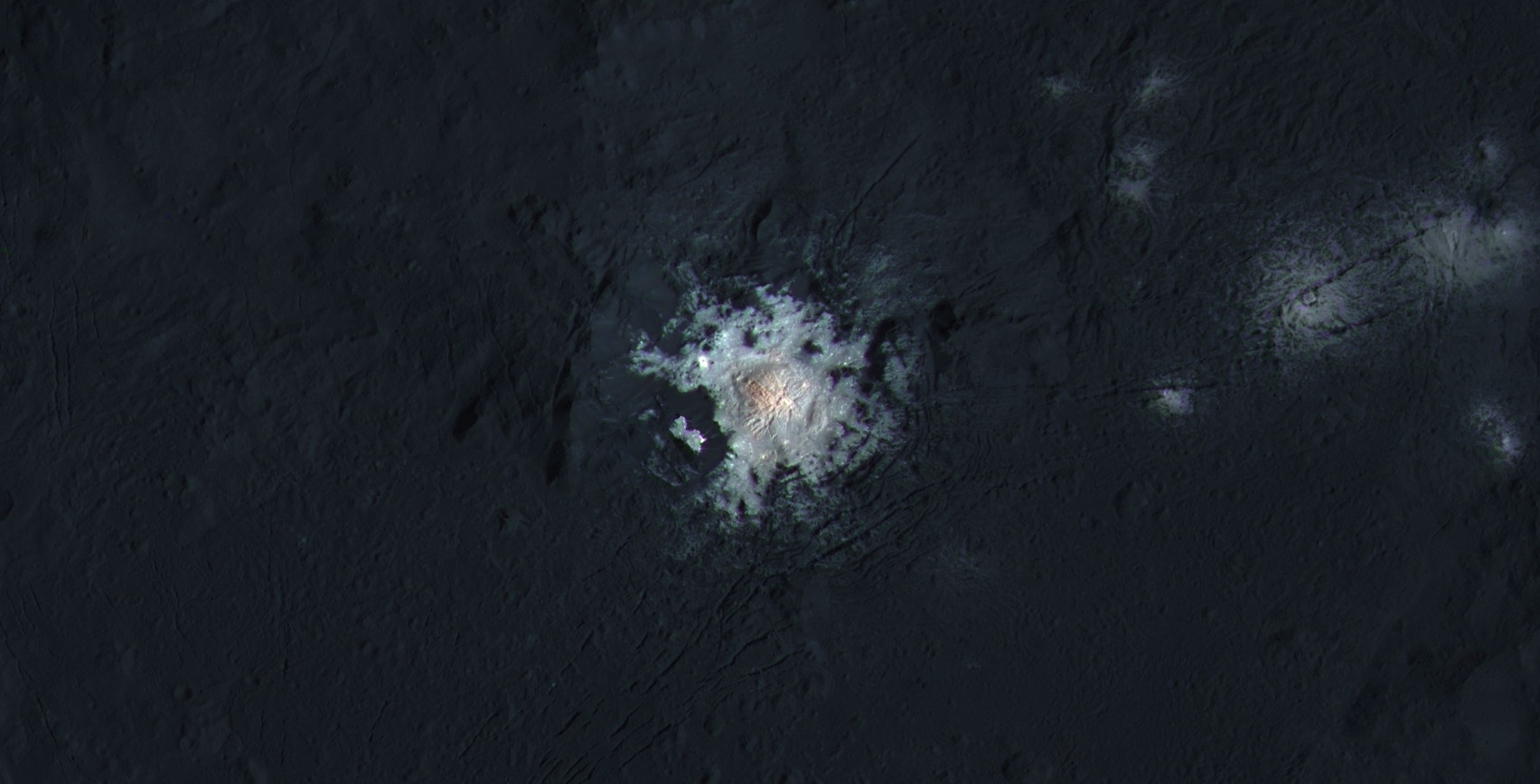End of the main mission of the Dawn probe. The apparatus remains with Ceres forever

July 1, the main mission of the probe Dawn came to an end. NASA is not going to stop the device, as it plans to do with the interplanetary station Rosetta ESA . But further on Ceres Dawn will not fly as intended. Previously, the project team had planned that after studying the Cereto planetoid, the probe would fly farther - first to the Sun, going to a safe orbit for itself, and then to the asteroid Adeon . The last point of the plan was calculated for May 2019.
But now experts have come to the conclusion that the study of Ceres should be continued - the scientific value of the current mission will be higher than a visit to Adeona. Scientists believe that Dawn will be able to obtain data that is interesting for science when a planetoid passes through perihelion - the minimum point of the orbit from the Sun. The project team could not come to a common opinion in terms of extending the mission of the probe. On July 1, a post on Dawn's flight to Adeone even appeared on the NASA website. A little later, the post was removed, and representatives of the agency stated that the publication of this material was a mistake. Now the site has information that the probe remains in Ceres orbit.

Photos of spots on Ceres sent by Dawn in March 2016 (photo: NASA)
')
Long road to Ceres
The history of the Dawn probe began in 1992, when project lead expert Christopher Russell (Christopher Russell) presented the effective ion engines of the device. They cannot develop such significant traction as rocket engines, but they work much longer. Such engines were originally planned to be installed on artificial satellites of the Earth, but Russell decided to put them on a vehicle that would go to the solar system’s asteroid belt.
The authors of the project received three refusals from the leadership of NASA, but in 2001 the mission nevertheless received approval. As part of the mission, the Dawn probe was to visit the two largest objects in the asteroid belt: Vesta, the largest asteroid in the solar system, and Ceres, the dwarf planet. According to Russell, when using chemical rocket engines, it would be necessary to launch two vehicles to Vesta and Ceres - the fuel would simply not be enough to visit two objects in the asteroid belt at once. But since the project team decided to use ion engines, the entire program could be executed using just one device.
Why for studying decided to choose Vesta and Ceres? The fact is that scientists considered them the oldest objects in the solar system. Their study would help clarify some aspects of the origin of the planets and find out what processes led to the formation of the solar system in its current form. In this case, both objects are different from each other. Vesta is a rocky world without much liquid or gas. The surface of Vesta is covered with meteorite craters. Ceres differs from Vesta by its lower density; earlier it was suggested that its surface may be covered with ice, and under the surface there may be an ocean of liquid water. In addition, astronomers have noticed mysterious bright spots on the surface of Ceres. But from the Earth it was impossible to understand what these formations are, and what their nature is. Ceres is the only object in the Solar System with such properties.
Mission successes dawn
The probe was launched into space in 2007. The withdrawal of the apparatus outside the Earth was carried out using the Delta II launch vehicle. The apparatus approached Vesta in 2011.

Anthony Crater (Vesta Southern Hemisphere). Photo: NASA
Having stayed in the asteroid orbit for a year, the probe went to Ceres. Dawn entered the planetoid orbit in March 2015. In October 2015, the spacecraft occupied the lowest orbit.
As they approached the planetoid, Earth scientists obtained more and more high-quality images of Ceres and its surface. But the nature of the spots was found only after the closest approach to the planetoid. Up to this point, one group of scientists has suggested that the spots are the emergence of water ice to the surface. Other experts argued that this is the release of salts to the surface.
After the probe sent out the latest data on the study of spots with high-resolution photographs of these formations, the situation cleared up. Most likely, the spots consist of magnesium sulfate, a chemical compound with a high albedo. By the way, not so long ago, scientists saw a haze over these spots.
Scientists have found that under the surface of the planetoid are large reserves of water ice. Scientists say that in the early stages of its evolution, Ceres was a warm world, and the ocean was splashing on its surface. Unfortunately, over time, this world began to cool. And since the planetoid did not have its own source of heat (like in Europe, for example), the water was frozen.
What's next?
The Dawn probe will continue to study the planetoid while in its orbit. There are more questions about the origin of Ceres, about the structure of its surface layers and subsoil than answers. And scientists hope to get answers to at least some of these questions.
Source: https://habr.com/ru/post/395843/
All Articles